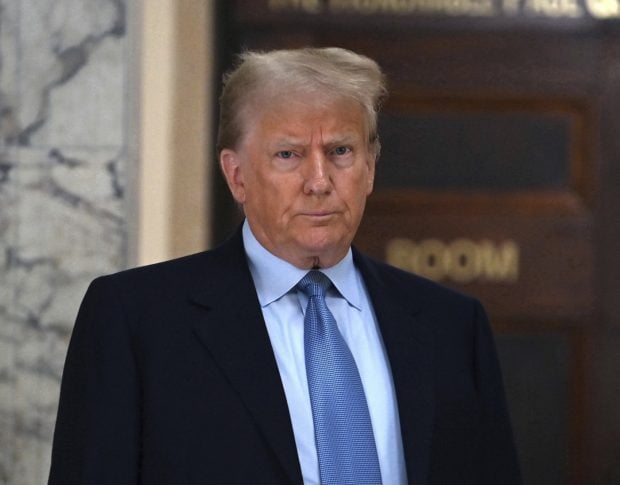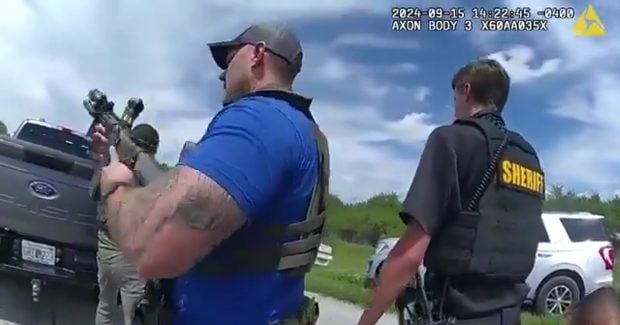I still remember the shock of seeing the first trailer for Michael Mann’s 2004 movie “Collateral,” starring Tom Cruise as a hitman named Vincent on assignment in Los Angeles, and Jamie Foxx as Max, the cabdriver that Vincent holds hostage and turns into his personal wheelman. The movie was shot on video, and looked like it.
Mann, who executive produced TV’s “Miami Vice” (1984-89) and had already directed some influential thrillers, including “Thief,” “Manhunter,” and “Heat,” was a master of a modern film noir look. And he excelled at shooting action sequences at night, even bringing a water truck to locations and spraying down the streets to create impressionistic reflections of streetlights. The “Collateral” footage was very grainy compared to Mann’s shot-on-film thrillers, and occasionally had a smeary, somewhat strobe-like effect that was recognizable from my own regular-definition video cameras. The smeariness was especially notable when the camera moved rapidly to follow action.
Did the look of “Collateral” seem like a step down for Mann, and for movies? I worried about that.
The actual movie, which came out 20 years ago this week and just came out on 4K Blu-ray for the first time, was a much richer experience. It didn’t look slick or solid like Mann’s shot-on-film projects. It had a rough look, as if we were seeing footage captured on the fly by somebody who wasn’t supposed to be present. It felt raw, like a lot of films in the late ’90s and early aughts that had been shot with standard-definition video cameras and then printed to 35mm film, creating a strange hybrid texture. (For examples, check out “The Celebration,” “Dogville” and “28 Days Later.”) I was struck by the fact that visual elements that most big-budget Hollywood movies would have avoided for fear of being called amateurish (such as lots of grain in footage captured at night, or obvious video “tells” like smeariness/strobing) were not only present in “Collateral” but seemed to have been leaned into rather than minimized. The movie seemed very comfortable in its own digital skin. This was not unusual in low-budget movies, but it was highly unusual in a $65 million production like “Collateral.”
Most striking of all — and to my mind, a big compensation for anybody who missed the solid richness of 35mm film — you could see pretty much everything that was happening at night in Los Angeles, including the way the city’s lights were reflected in in low clouds. There was no easy way to capture that distinctive characteristic of urban life on motion picture film. Not as vividly, anyway.
This was the look Mann wanted, according to an American Cinematographer article. Co-director of photography Paul Cameron (working with Dion Beebe) said the director “wanted to use the format to create a kind of glowing urban environment; the goal was to make the L.A. night as much of a character in the story as Vincent and Max were.”
Mann is a formalist who had already been experimenting with video in “Ali” (which was shot on 35mm but included a few subjective video shots of the title character) as well the CBS series “Robbery Homicide Division” (2002-2003), which was shot entirely with the Sony F-900, a high-definition video camera. The same camera would end up being used to shoot almost all of “Collateral,” though for the first day, they used another camera that was hot at the time, the Thomson Grass Valley Viper FilmStream, which David Fincher would use on “Zodiac,” until realizing it wasn’t the right fit for the project and abandoning it.
On this movie, as well as all of his subsequent features (“Miami Vice,” “Public Enemies,” “Blackhat” and “Ferrari“), Mann would use increasingly sophisticated video cameras but would never seem to be trying to pretend he was shooting on film. He let the video be video. That was a different way of approaching Hollywood features. It was a statement — something like, “Yes, this format can’t do things that 35mm film can do, but it can do a lot of other things that film can’t and has its own identity.”
Mann is not, to my knowledge, a painter himself, but he’s fascinated by painting and takes inspiration from it. Famous shots in some of his contemporary-set films are influenced by David Hockney, and a painting by William Blake figures into not just the plot of “Manhunter” but the visual strategy. One of the first things I learned when I was studying fine arts as a young man was that you can’t force a medium to be something it isn’t. An oil painting doesn’t have the same textural properties as watercolor or oil pastels or charcoal. A sculpture made from wood can’t achieve the same effects as one made from marble or scrap iron. You can try to get as close as you can, if that’s the nature of the exercise.
But based on Mann’s work post-2002, I think he would say that such a project amounts to a misallocation of effort. Many of the technical developments in cinematography over the past quarter-century have been driven by a desire to make video look as much like 35mm film as possible, because 35mm film is what originally defined the word “cinematic.” Mann has gone in the opposite direction, and while I know it’s not to everyone’s liking, I appreciate the boldness. Visually he’s become one of the most radical filmmakers working with large budgets — his later films are more abstract-seeming than his early, shot-on-film work — and shooting on digital video is a big part of that. I wonder if he feels that digital video helped him become the moviemaker he was always supposed to be?

:format(jpeg):quality(80)/wp-content/uploads/2024/09/poli-iasi-universitatea-craiova-superliga-superbet-15092024-2-scaled.jpg)
:format(jpeg):quality(80)/wp-content/uploads/2024/09/hepta6436749-scaled.jpg)
:format(jpeg):quality(80)/wp-content/uploads/2024/09/iakutsk-cel-mai-rece-oras-din-lume.jpg)
:format(jpeg):quality(80)/wp-content/uploads/2024/09/simion-1.jpg)
:format(jpeg):quality(80)/wp-content/uploads/2024/09/ferma-dacilor-3.jpg)



:format(jpeg):quality(80)/wp-content/uploads/2024/09/de-ce-boala-crunta-suferea-gigi-multescu-dezvaluirea-lui-sorin-cartu.jpg)
:format(jpeg):quality(80)/wp-content/uploads/2024/09/cezar-oatu.jpg)
:format(jpeg):quality(80)/wp-content/uploads/2024/09/encefalomielita-mialgica-simptome.jpg)
:format(jpeg):quality(80)/wp-content/uploads/2024/09/politia-1.jpg)
:format(jpeg):quality(80)/wp-content/uploads/2024/09/rapid-bucuresti-universitatea-cluj-superliga-superbet-160920241-scaled.jpg)
:format(jpeg):quality(80)/wp-content/uploads/2024/09/u-craiova-surpriza-mare-de-tot-adrian-mutu-andrei-vochin-cauzele-decaderii-oltenilor.jpg)



:format(jpeg):quality(80)/wp-content/uploads/2024/09/interdictie-telefoane.jpg)

:format(jpeg):quality(80)/wp-content/uploads/2024/09/adrian-mutu-gigi-becali.jpg)
:format(jpeg):quality(80)/wp-content/uploads/2024/09/fechet-inundatii.jpg)

:format(jpeg):quality(80)/wp-content/uploads/2024/09/ploaie-de-diamante-venus-uranus.jpg)

:format(jpeg):quality(80)/wp-content/uploads/2024/09/i-am-subordonat-80-minute-nelutu-varga-atac-la-fcsb-dupa-derby-ul-cu-cfr-cluj-2-2.jpg)




